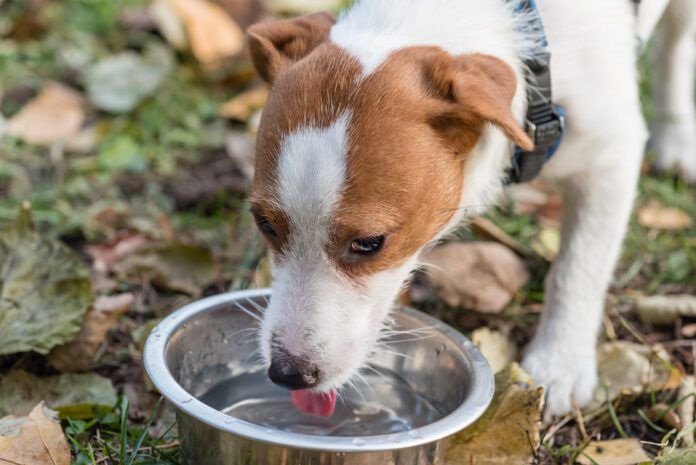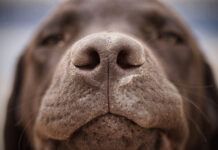Whether your dog is sick, feeling a little off, or has an acute or chronic illness that makes him avoid water, he still needs to drink enough to stay hydrated. Dehydration is a serious state you want to avoid!
Getting a sick dog to drink can be tough to do, but we have ways to entice a dog to drink. Start with the most basic requirement: Cool, clean, and fresh water. If I notice one of my dogs drinking, I get up when he is done and rinse and refill the bowl. My older male Belgian Tervuren leaves the water bowl rather “slimy,” and my girls prefer a clean bowl and water. In hot weather, many dogs will drink more if you put some ice in their bowl.
Note: An elderly dog or any dog post dental work might prefer room-temperature water, as cool or cold water might be painful.
Flavorings for Dog Water
Beyond cool and fresh, you can add some flavoring to see if that helps increase your sick dog’s water intake. You can try:
Low-sodium bouillon. A small amount of bouillon in the water bowl is a tasty option with a nice aroma that even provides a little nutrition.
Tuna juice. Many dogs love the juice from tuna canned in water. The tuna juice also has an inviting smell that may inspire a sick dog to drink.
Chicken soup. We all laugh about chicken soup for sick people, but the attractive odor will get many a dog to lap some up. Once again, you provide a few nutrients, too. Just be sure to test that it is not hot!
Make a slurry. If your dog has a favorite food, you can often add water or put it in the blender and make a slurry. Canned food has more moisture than kibble, so try feeding some canned food for extra hydration.
How Much Water Should a Dog Drink?
Most internal medicine specialists generally agree that normal water consumption for healthy adult dogs, resting in a temperature-controlled environment, is 50 to 80 milliliters of water per kilogram of the dog’s body weight per day (mls/kg/day). To convert this to ordinary household measures, there are 30 mls in an ounce, 8 ounces in a cup, and .45 kg in a pound of body weight. What this works out to is rather simple: Normal water consumption is about an ounce of water per pound of the dog’s weight per day.
While this guide gets you in the ballpark of normal water consumption for an average dog, there are individual factors to consider:
- Active dogs (and yes, some dogs will chase a ball even when ill), need extra fluid.
- Dogs who are panting, whether due to hot weather or activity, need extra water. Dogs lose fluids via panting
- Brachycephalic dogs (think short muzzles and faces, like Pugs), pant routinely and need extra water.
- Sick dogs, especially with a fever, need extra water to stay properly hydrated.
- Dogs battling liver or kidneys problems require plenty of fluid.
- Any dog who has a gastrointestinal illness and is vomiting or has diarrhea or both is losing fluids and needs extra fluid intake to stay hydrated.
Warning Signs of a Dehydrated Dog
There may be times when you can’t stay ahead of your dog’s hydration needs despite your best efforts and he becomes dehydrated. His gums may be tacky to the touch and his mouth looks dry. If you tent his skin over his withers (highest point of his shoulders), it stays up (means he is really dehydrated) or returns to place slowly (somewhat dehydrated). Dehydration with no willingness to drink indicates a trip to the veterinarian for the possible administration of fluids (usually administered subcutaneous, or under the skin).
In many cases, your veterinary clinic staff can teach you how to administer subcutaneous fluids, so you can bring some home with you. Be sure to follow the protocol carefully to keep everything clean. These fluids will be absorbed over a couple of hours and can supplement anything you give orally. For severe cases, your dog may need to stay in the hospital and receive IV (intravenous) fluids.







When will I receive my first issue? How do I access back issues on line? I need to buy kibble for my adopted dog and need your recommendation